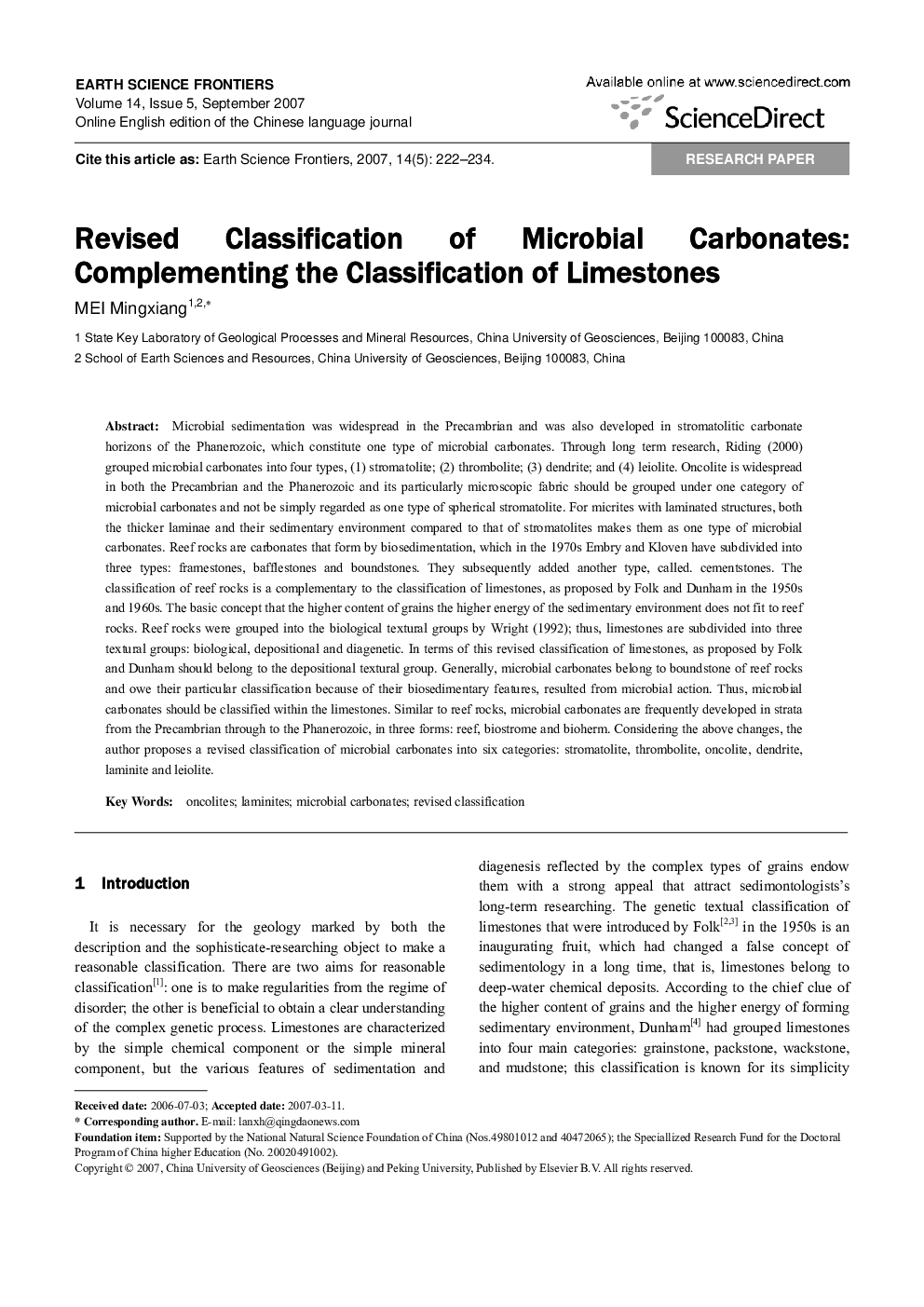| کد مقاله | کد نشریه | سال انتشار | مقاله انگلیسی | نسخه تمام متن |
|---|---|---|---|---|
| 4701686 | 1352724 | 2007 | 11 صفحه PDF | دانلود رایگان |

Microbial sedimentation was widespread in the Precambrian and was also developed in stromatolitic carbonate horizons of the Phanerozoic, which constitute one type of microbial carbonates. Through long term research, Riding (2000) grouped microbial carbonates into four types, (1) stromatolite; (2) thrombolite; (3) dendrite; and (4) leiolite. Oncolite is widespread in both the Precambrian and the Phanerozoic and its particularly microscopic fabric should be grouped under one category of microbial carbonates and not be simply regarded as one type of spherical stromatolite. For micrites with laminated structures, both the thicker laminae and their sedimentary environment compared to that of stromatolites makes them as one type of microbial carbonates. Reef rocks are carbonates that form by biosedimentation, which in the 1970s Embry and Kloven have subdivided into three types: framestones, bafflestones and boundstones. They subsequently added another type, called. cementstones. The classification of reef rocks is a complementary to the classification of limestones, as proposed by Folk and Dunham in the 1950s and 1960s. The basic concept that the higher content of grains the higher energy of the sedimentary environment does not fit to reef rocks. Reef rocks were grouped into the biological textural groups by Wright (1992); thus, limestones are subdivided into three textural groups: biological, depositional and diagenetic. In terms of this revised classification of limestones, as proposed by Folk and Dunham should belong to the depositional textural group. Generally, microbial carbonates belong to boundstone of reef rocks and owe their particular classification because of their biosedimentary features, resulted from microbial action. Thus, microbial carbonates should be classified within the limestones. Similar to reef rocks, microbial carbonates are frequently developed in strata from the Precambrian through to the Phanerozoic, in three forms: reef, biostrome and bioherm. Considering the above changes, the author proposes a revised classification of microbial carbonates into six categories: stromatolite, thrombolite, oncolite, dendrite, laminite and leiolite.
Journal: Earth Science Frontiers - Volume 14, Issue 5, September 2007, Pages 222-232